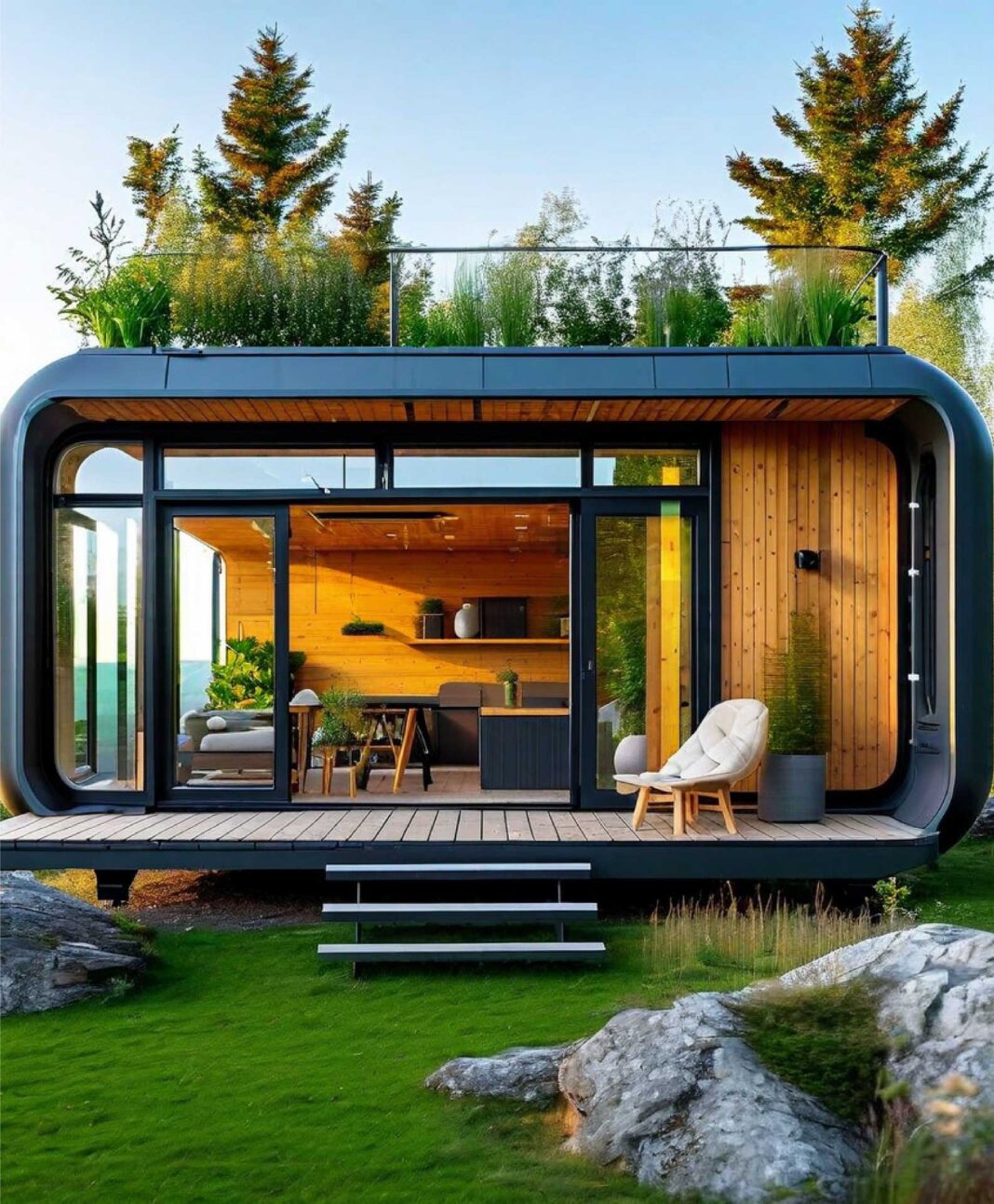Compact, efficient, and cutting-edge in their design, these homes are here to stay, emerging as a genuine alternative to traditional housing, both for today and the future
Compact layouts, energy efficiency, factory production, and a hint of science-fiction aesthetics combine to create micro homes, also called habitable pods or capsules, redefining what it means to call somewhere home in the 21st century. Unlike conventional houses, they propose compact, intelligent, and radically innovative solutions that adapt to new ways of living.
Although the idea first emerged in the 1960s and 70s, the rise of sustainability, digital design tools, and the housing emergency in many cities has reignited interest in these alternative dwellings that integrate technology and design within compact formats. They now stand as a viable option for young people, digital nomads, or anyone seeking a more minimalist lifestyle.
Habitable pods are modular, self-sufficient, or semi- autonomous units designed to accommodate the essential functions of a home, offering a place to sleep, cook, work, and relax, but in just a few square metres of space. They are mass- produced using lightweight, low-impact materials to ensure easy and efficient transport and assembly. They can serve as temporary or portable extensions, or become permanent, independent homes in areas with flexible planning regulations or in experimental urban developments.
Flexibility and mobility are among their key advantages. Many of these pods are designed to be relocated, transported, or expanded with ease thanks to their modular design. This makes them especially appealing to those who value mobility or need a home capable of adapting to different stages of life. An excellent example of such a home is the habitable pod designed by Norman Foster and the firm Holcim for the Essential Homes project. It is a 36 m2 home, costing less than €20,000. It is sustainable and features a stand-out rollable low-carbon concrete roof.
Today’s habitable pods are a far cry from the somewhat precarious-looking early mini-homes. They now boast futuristic architectural design and refined detailing featuring aerodynamic forms, high- quality finishes, smart-home technology, and renewable energy efficiency, whilst using recyclable building materials.
Inside, most pods have an all-in- one design, integrating a living area, kitchen, bathroom, and bed within a reduced footprint. Storage solutions are seamlessly built into walls, floors, or ceilings. Another priority for these pods is maximising natural light and ventilation. Strategically placed windows, skylights, and passive climate control systems help maintain a comfortable temperature without needing extensive heating or air conditioning systems.



